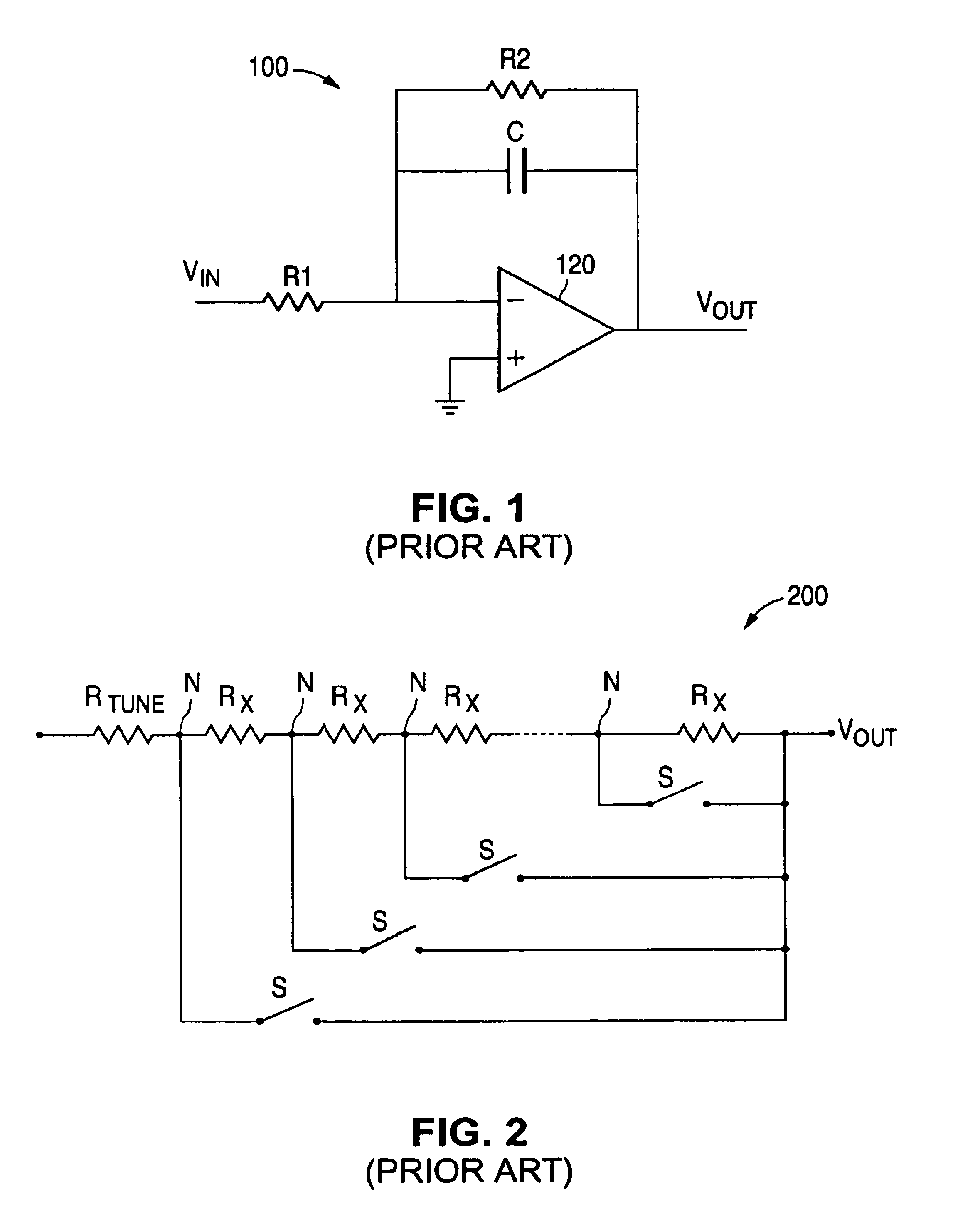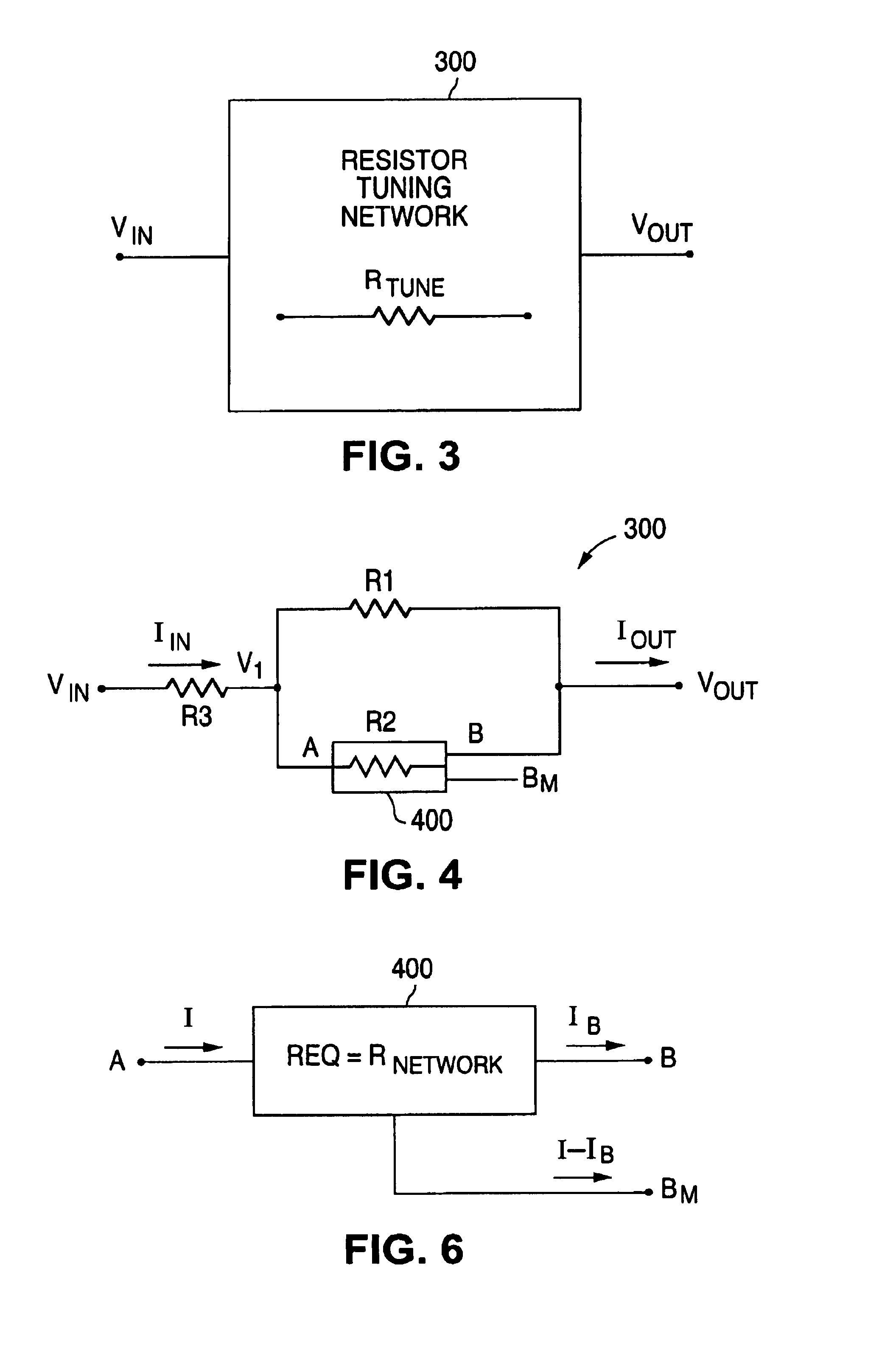Resistor tuning network and method for tuning a resistor in an electronic circuit
a technology of resistor and tuning network, which is applied in the direction of digital-analog convertors, transmission systems, instruments, etc., can solve the problems of component parameter dependence, analog processing accuracy, and component value variation in one fabrication run, so as to achieve good linearity in the tuning transfer function, large spread of resistor values, and high tuning accuracy
- Summary
- Abstract
- Description
- Claims
- Application Information
AI Technical Summary
Benefits of technology
Problems solved by technology
Method used
Image
Examples
example one
[0048]FIG. 7 illustrates a first example of tuning of an equivalent resistor value (REQ) variation of resistor tuning network 300 of the present invention. Assume that a resistor RTUNE needs to be provided that has resistor values tuned to values within five percent (5%) of a five thousand ohm resistor (5.0 kilohms) over an expected process variation of plus or minus forty percent (±40%). The value of resistor R1 is chosen to be ten thousand ohms (10.0 kilohms) and the value of resistor R2 is chosen to be five thousand ohms (5.0 kilohms). The value of series resistor R3 is chosen to be zero ohms (0.0 ohms).
[0049]The value of resistor R2 is chosen to be a four (4) bit R-2R ladder network. That is, the value “n” in the R-2R ladder network is chosen to be four (4). In the case of a five thousand ohm resistor (5.0 kilohms), a binary setting of “1000” for the four switches in the R-2R ladder network provides an equivalent resistance of five thousand ohms (5.0 kilohms). A binary setting o...
example two
[0054]FIG. 8 illustrates a second example of tuning of an equivalent resistor value (REQ) variation of resistor tuning network 300 of the present invention. Assume that a resistor RTUNE needs to be provided that has resistor values tuned to values within five percent (5%) of an eight thousand ohm resistor (8.0 kilohms) over an expected process variation of plus or minus forty percent (±40%). The value of resistor R1 is chosen to be ten thousand ohms (10.0 kilohms) and the value of resistor R2 is chosen to be five thousand ohms (5.0 kilohms). The value of series resistor R3 is chosen to be two thousand ohms (2.0 kilohms).
[0055]The value of resistor R2 is chosen to be a four (4) bit R-2R ladder network. That is, the value “n” in the R-2R ladder network is chosen to be four (4). In the case of an eight thousand ohm resistor (8.0 kilohms), a binary setting of “1000” for the four switches in the R-2R ladder network provides an equivalent resistance of eight thousand ohms (8.0 kilohms). A...
PUM
 Login to View More
Login to View More Abstract
Description
Claims
Application Information
 Login to View More
Login to View More - R&D
- Intellectual Property
- Life Sciences
- Materials
- Tech Scout
- Unparalleled Data Quality
- Higher Quality Content
- 60% Fewer Hallucinations
Browse by: Latest US Patents, China's latest patents, Technical Efficacy Thesaurus, Application Domain, Technology Topic, Popular Technical Reports.
© 2025 PatSnap. All rights reserved.Legal|Privacy policy|Modern Slavery Act Transparency Statement|Sitemap|About US| Contact US: help@patsnap.com



